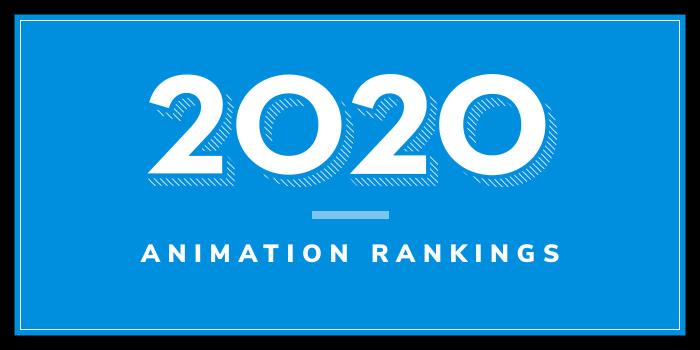
Master 3D modeling for film and video games in under 2 years with CG Spectrum. Get personalized career training online from leading 3D artists from major studios, plus career support and access to a vibrant community. Learn more.

| Ranking | School | City |
|---|---|---|
| 1 | Carnegie Mellon University | Pittsburgh |
| 2 | University of the Arts | Philadelphia |
| 3 | University of Pennsylvania | Philadelphia |
| 4 | Drexel University | Philadelphia |
| 5 | Edinboro University | Edinboro |
Our 2020 ranking of the top 5 animation school programs in Pennsylvania. For an explanation of the ranking criteria, click here.

Founded in 1900, Carnegie Mellon University (CMU) serves more than 14,500 students representing over 100 countries. The school offers more than 100 programs across seven colleges, including the College of Fine Art, home of the School of Art. The CFA SA offers a BFA in Electronic and Time-Based Media with a Focus in Animation and a BFA in Integrative Design, Arts & Technology (IDeATe) with a Concentration in Animation & Special Effects. A Minor in Animation & Special Effects is also available.
The Electronic and Time-Based Media BFA “explores the creative potential of emerging technologies and the critical impact they have on contemporary culture,” says the school. The curriculum “implicitly encourages cross-disciplinary study.” As such, “many students merge fine art and computer science based interests either within the BFA program or through the unique BCSA degree program.” Besides Animation, students may focus in unique areas such as Bioart, Computational and Interactive Art, Tactical Media, and Tangible Media, as well as Game Arts and Video and Performance. “Students particularly interested in the intersection of art and technology can take advantage of expanded course offerings through the IDeATe Program.”
Students in the BFA in IDeATe with Animation & Special Effects “will study the interconnected components of performance capture, rendering, 3D and 2D animation, and special effects. They will merge arts and technology perspectives in all courses to explore each of these components and the area of digital animation as a whole. Through common repositories across courses and collaborative projects, students will explore how the different components and types of expertise come together to create a convincing computer animated experience.”
Students in this program will also be able to “connect to other IDeATe courses to explore applications of digital animation in different contexts (games, interactive environments etc.) and to integrate other key areas of knowledge (narrative, sound) into digital animation projects.”
The School of Art at CMU also offers supportive courses that “serve to enrich the student experience in IDeATe.” Offerings include Advanced ETB: 2D Animation, Advanced ETB: Animation, Advanced ETB: Moving Image Magic: Visual Effects and Motion Graphics, and Animation, Art, and Technology.

Founded in 1876, University of the Arts (UArts) is one of the nation’s only comprehensive arts university. The school serves 1,900 students enrolled in 47 undergraduate and graduate programs on the University's campus at the center of Philadelphia's vibrant Avenue of the Arts.
Programs, including more than 30 minors, are offered through the Colleges of Art, Media & Design and Performing Arts, and the Divisions of Liberal Art and Continuing Studies.
The College of Art, Media & Design houses the School of Film, which offers BFAs in Animation and Film + Animation, and a Minor in Animation. The school says that the BFA program “supports traditional hand drawn, 3D computer, stop motion and any animation techniques that can be imagined or explored.” Students in the program will explore the variety of techniques available to the current animator, hone traditional skills, and learn how to tell engaging stories as well as create memorable characters, and bring their concepts to life.
Besides taking courses such as Drawn Character Animation, Screenwriting, Special Effects Compositing, Storyboarding, and 2D Computer Character Animation, BFA students will create a Junior and Senior Animation Piece, an Animation Thesis, and an Internship.
The BFA in Film + Animation “allows students to explore the possibilities of both film and animation.” Students in the program will study “film and animation techniques, explore various genres and styles, and create a capstone project that combines film and animation in innovative way.” Other program highlights include hands-on instruction by “award-winning, professional filmmakers and animators,” production workshops, lectures, screenings and critiques, and internship and study abroad opportunities. In addition to study abroad, international opportunities include festivals and workshops in countries such as Canada, France, and South Korea.
UArts animation alumni work on blockbuster special effects films, animated television series, commercials, and video games in a variety of roles–from director to animator to storyboard artist to editor to many other positions.

Founded in 1740, the University of Pennsylvania (UPenn) is one of the nation’s oldest universities. The school serves 25,860 students enrolled in more than 400 programs across 16 schools. Programs for aspiring animators are offered through the School of Design-Department of Fine Arts and the School of Engineering and Applied Science. The School of Design-DFA offers a BFA in Fine Arts with an Animation or 3D Modeling Studio. The program combines studio practices, seminar courses, and interactions with visiting artists and professionals in order to provide an open intellectual framework to foster critical awareness and independent methods of artistic research and learning.
The School of Engineering and Applied Science is home to the Digital Media Design Program, which leads to a Bachelor’s in Engineering and Science (BSE) with a Digital Media Design Major (DMD). The School also houses the Center for Human Modeling and Simulation (HMS), which offers a Computer Graphics and Game Technology Program (CGGT), which leads to an MS.
Created in 1998 to educate a new generation of people to work in computer graphics, the interdisciplinary BSE DMD program was designed for students who have an interest in computer graphics, animation, games, and the design of virtual reality environments and interactive technologies. A Digital Media Design (DMD) Minor, and a PhD in Human Modeling and Simulation (HMS PhD) are also available. BSE DMD students go on the work at major studios such as Walt Disney Animation, DreamWorks Animation, Electronic Arts, Microsoft, Pixar, and Zynga Games. These are the largest employers of UPenn DMD graduates.
The Center for HMS established the CGGT program in 2004 with a goal to expose recent graduates, as well as individuals returning from industry, to state-of-the-art graphics and animation technologies, as well as interactive media design principles, product development methodologies and engineering entrepreneurship.
The CGGT program prepares students for positions requiring multidisciplinary skills such as designers, technical animators, technical directors and game programmers. Students in the CGGT program use the equipment and resources available through the SIG Center for Computer Graphics. Opportunities for specialization are provided in such core areas as art and animation, creative design, animation and simulation technology, human/computer interfaces and production management.

Drexel University was established in 1891. The school serves nearly 29,000 campus and online students enrolled in over 200 degree programs across 15 colleges and schools. The Westphal College of Media Arts & Design is home to the Digital Media Department, which offers a BS and a Minor in Animation & Visual Effects. MS and PhD degrees in Digital Media are also available.
The BS in Animation & Visual Effects gives students the “technological, story-telling and design skills to succeed as animators and visual effects artists in the highly competitive entertainment and design worlds,” says the school. “Over the course of their education in the program, students will pursue a foundation of design and technology by taking core courses in all aspects of digital media while delving into coursework covering many areas of specialization.”
The program consists of 51 credits of core courses, 45 hours of general education courses, 27 elective credits, 24 credit hours of art and art history requirements, 18 credits of animation requirements, 15 credits in media and computer science, and six credits of animation electives.
The Animation & Visual Effects program features a six-month co-op, where students will “learn the underlying principles of animation along with industry-standard software technology. The entire creative pipeline from storyboarding through modeling and animation is covered in-depth, allowing students to experience all aspects of production.”
The two-year MS in Digital Media is a hybrid program that offers comprehensive studies in Advanced Digital Design including 3D Modeling, Animation, Interactivity, Gaming and Digital Media History, and Theory and Methods. The curriculum for the two-year program “offers a mix of academic course work and project-related activities. Projects consist of funded grant research opportunities, industry-sponsored projects and independent, student-generated and faculty-approved projects.”
The PhD in Digital Media “focuses on translational research in digital media within an experiential learning environment. It studies the application of digital media towards solving research problems in various disciplines including but not limited to engineering, education, cultural heritage, health or business. This doctoral program is built on a fundamentally interdisciplinary course structure and emphasizes an iterative and design based research philosophy.”
PhD students have the same project opportunities as MS students. Past projects for the programs have included Brain-Computer Interfaces (BCI) for video games, theme park ride and animation design, interactive online non-linear narrative comics, advanced animation production techniques, a multi-media interactive dance performance with body tracking, and multi-touch games for teaching middle-school children.
Graduates of the Westphal Animation and Digital Media programs at have landed positions at leading companies such as Pixar, DreamWorks, Microsoft XBOX, Disney, NCSoft, and many others.

Edinboro University was founded in 1857 as a private training school for teachers under the name Edinboro Academy. The school serves nearly 5,000 students and offers more than 100 areas of academic study across five colleges and schools. The College of Arts, Humanities and Social Sciences is home to the Art Department, which offers a BFA in Animation.
The school says that the program offers “direct, hands-on experience with state-of-the-art technology, including professional studio/field film and video cameras, lights and sound recording equipment, non-linear video editing systems, animation rostrum stands, a large green screen area, Screendigital scanners, animation line testers, and both 2D and 3D computer animation workstations” Animation, film and video production internships are available locally, regionally, and nationally.
Graduates Edinboro’s Animation BFA program find success in every facet of animation. They work at small independent firms like Animal, and large high-profile studios like Disney, Pixar, Blizzard and Nickelodeon. They are modelers and character designers, animation generalists and visual effect specialists, directors and editors. Names of alumni can be spotted in the credits for such films as Zootopia, Frozen, Night at the Museum, and Star Wars: The Clone Wars.